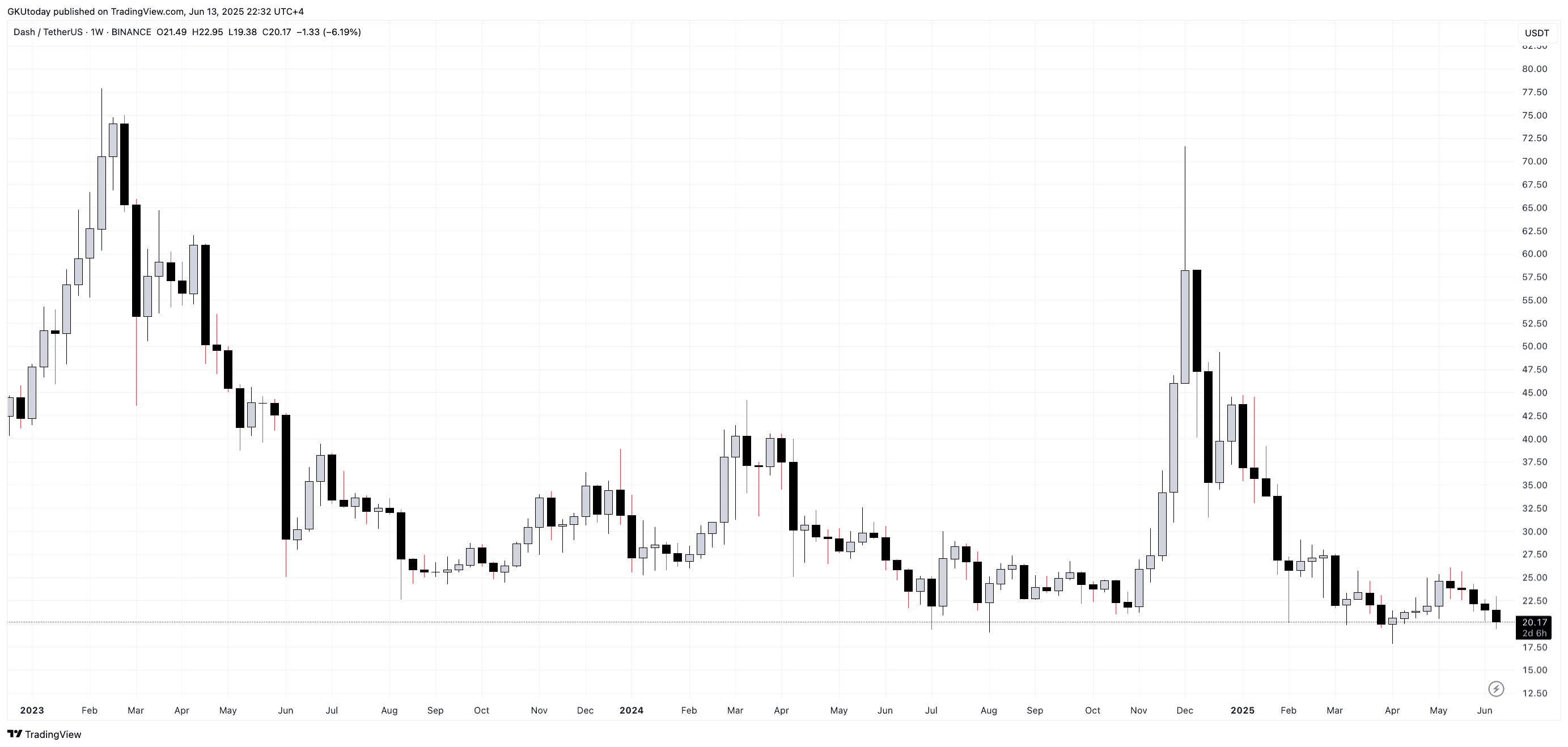
Dash (DASH) enters 2025 as one of crypto’s longest-running digital currencies, known for real-world payments and privacy. Launched in 2014 as a Litecoin fork, it aimed to improve Bitcoin’s model with faster transactions and optional anonymity. Over time, Dash pioneered features like masternodes and on-chain governance, making it a self-funded, community-driven network. While it’s no longer in the top ranks, Dash remains relevant in niche markets like Latin America and continues evolving through new initiatives like Dash Platform.
Dash is an open-source blockchain focused on fast, low-cost payments. It started as “XCoin,” then “Darkcoin,” before rebranding. Its two-tier architecture includes proof-of-work miners and a second layer of masternodes that enable features like InstantSend and governance. The X11 algorithm and Dash’s unique difficulty adjustment stabilize the network, while block times average 2.5 minutes — much faster than Bitcoin.
Dash splits duties between miners and masternodes. To run a masternode, users must lock 1,000 DASH. These nodes power key features:
PrivateSend breaks transactions into standard denominations, mixes them, and redistributes them to new addresses, reducing traceability. Unlike Monero or Zcash, Dash offers privacy as an opt-in feature layered on a transparent ledger.
Dash’s total supply caps out near 18.9 million DASH, with 12.3 million circulating in 2025. Rewards are split:
The emission decays gradually (~7.14% annually) instead of halving. EvoNodes, requiring 4,000 DASH, operate the Dash Platform and earn a premium share of rewards.
Dash pioneered a built-in treasury system. Each month, masternodes vote on proposals to fund development, marketing, or community initiatives. If a proposal passes the 10% approval threshold, it’s paid via a “superblock.” This decentralized governance model has kept the project evolving independently since 2015.
Launched in mid-2024, Dash Platform expands Dash from digital cash into a development layer. Key components:
Users lock DASH to get credits used on the Platform. EvoNodes validate these operations, providing the backend for new decentralized applications. Platform usernames are now integrated into the DashPay wallet.
Dash is still used for real-world payments, especially in regions like Venezuela and parts of Africa. Key utilities include:
With tokenization support arriving via Platform v2.0, new use cases like loyalty programs, community coins, and decentralized identity systems are emerging.
Looking further, Dash plans to add smart contracts (v3.0) and inter-blockchain communication (IBC) in the coming years, turning Dash into a multi-functional Web3 platform.

Dash in 2025 is no longer the spotlight-grabbing project it once was, but it’s far from obsolete. It continues delivering fast, reliable payments, optional privacy, and now, new Web3 functionality. Its community-run treasury model funds ongoing upgrades. With the launch of Dash Platform, the network is redefining itself as more than just digital cash — it’s building toward a user-friendly decentralized future while staying true to its original mission of financial freedom.
Keywords: Dash 2025, DASH token, Dash price prediction, how to buy Dash, Dash masternodes, InstantSend, PrivateSend, Dash governance, Dash treasury, Dash Platform, EvoNodes, DashPay, decentralized payments, fast crypto transactions, privacy coins 2025, coin mixing, X11 algorithm, Dash inflation model, crypto with on-chain governance, altcoins to watch 2025, crypto remittances, Venezuela crypto adoption, cross-border payments, real-world crypto use, low-fee blockchain, crypto without KYC, Dash merchant adoption, Web3 on Dash, tokenization on Dash, Dash smart contracts, decentralized identity, crypto wallet with usernames, Dash vs Bitcoin, Dash vs Monero, crypto swaps 2025, best coin for fast payments, BaltEX exchange, trade DASH on BaltEX, swap Dash for BTC ETH USDT, non-custodial crypto trading, privacy-first crypto exchange, cross-chain swaps, crypto trading without accounts, secure crypto exchange, Dash liquidity, self-custody platform, crypto wallet integration, blockchain usability, scalable altcoins, digital cash use case, long-term crypto projects, Layer-1 blockchain utility.